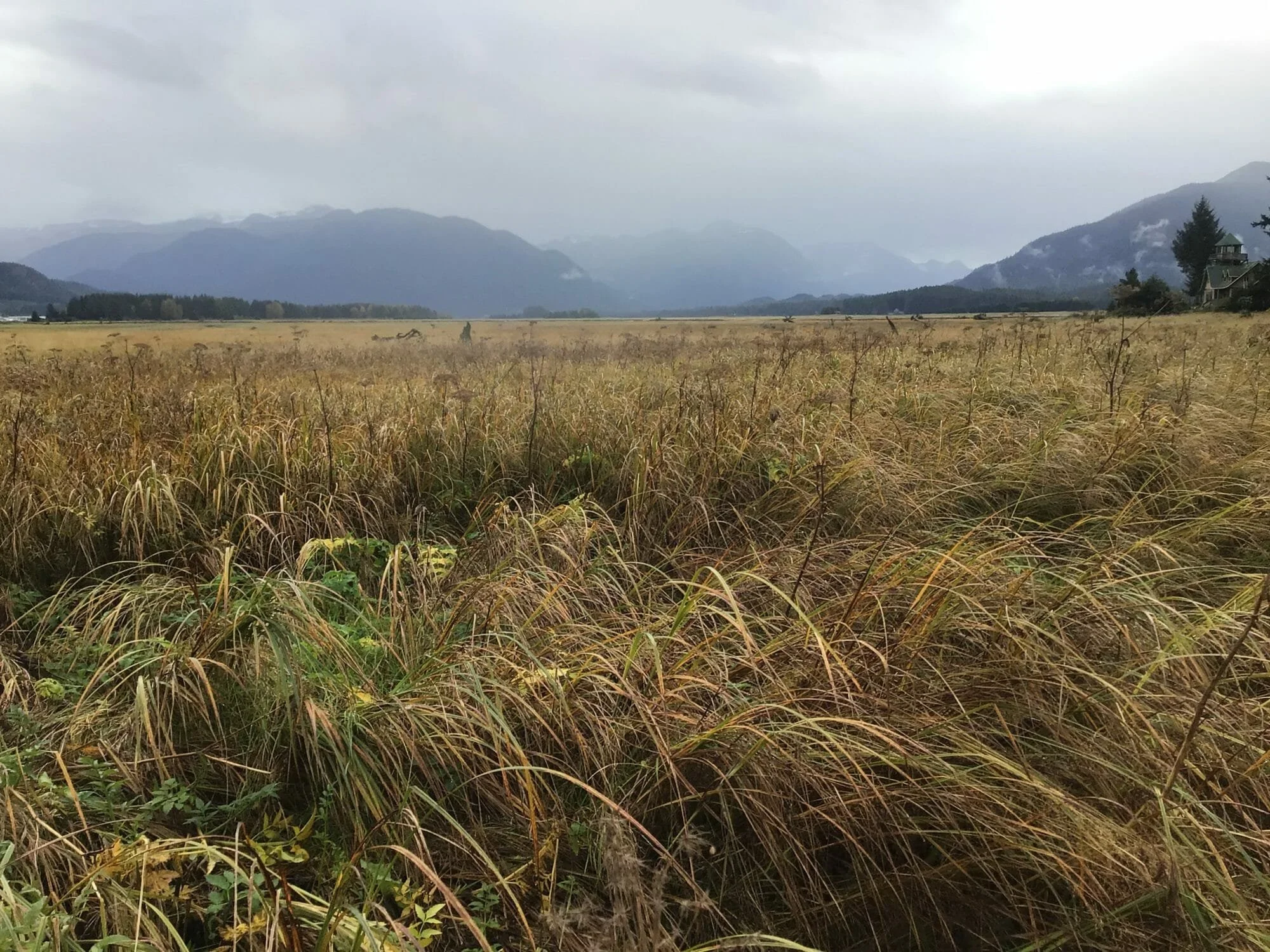
THE HEART OF JUNEAU
TAASHUYEE-CHOOKAN.AANI
Lingít for river flats-grassy land
AKA the Mendenhall Wetlands complex: more than 5,000 acres of estuarine habitat between mainland Juneau and Douglas Island.
The wetlands are a series of estuaries created by numerous streams flowing down the surrounding mountains.
As the tides ebb and flow, the wetlands alternate from grassland to shallow sea. The varying salt conditions produce a diverse community of plants, from sedge meadows and beach rye to spruce-hemlock forests in the surrounding uplands.
The diverse vegetation provides resting and feeding habitat for spring and fall migrations of waterfowl and shorebirds, and 3,764 acres of the open land has been protected as the Mendenhall Wetlands State Game Refuge. SEALT conserves adjacent properties to protect the integrity and size of the Refuge.
The Refuge is a National Audubon Society-designated globally significant Important Bird Area. It is vital habitat for 230 species of resident and migratory birds along the Pacific Flyway, a migratory route that extends from Alaska to Patagonia.
The Refuge is also home or valuable resource to numerous mammals, (including black bear, wolves, Sitka black-tailed deer, muskrat, otter, mink, and hare) and an ark of marine life, including eight species of anadromous fish and marine mammals like seals.
Taashuyee is a priority conservation site. Its integrity is undermined by climate change, glacial uplift, and encroaching development. The Southeast Alaska Land Trust works with private landowners surrounding the Refuge to protect accreted lands.

LEARN ABOUT CONSERVATION RISKS ON THE MENDENHALL WETLANDS AT WWW.HEARTOFJUNEAU.ORG
MENDENHALL WETLANDS STORYMAP
In 2021, the Southeast Alaska Land Trust partnered with the U.S. Fish and Wildlife Service and Discovery Southeast to produce a StoryMap. This StoryMap features the Mendenhall Wetlands and the Mendenhall Wetlands State Game Refuge – two overlapping areas iconic to the Juneau landscape.
SEALT has worked for over 25 years to conserve properties abutting the Refuge to help preserve the Refuge boundary and protect both critical wildlife habitat and a beloved recreation area.
CONSERVATION ON THE WETLANDS



